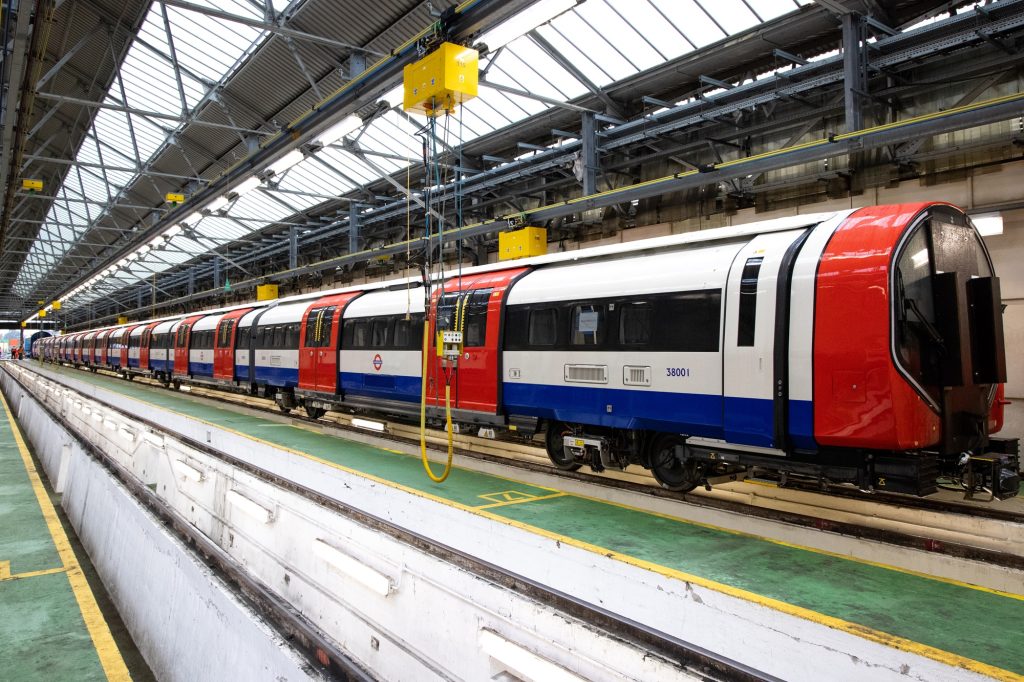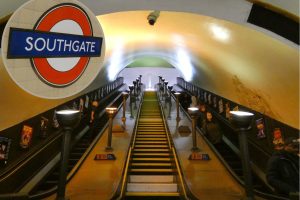The new nine-carriage trains will increase capacity by around 10% on the line once they’re fully up and running

Transport for London (TfL) has welcomed the first of the new Piccadilly Line trains to the capital ahead of a programme of intensive testing before the new trains start entering service in late 2025.
The test train is the first of a fleet of 94 new trains that are being built for TfL by Siemens Mobility to replace the existing fleet, which is nearly 50 years old. They are part of a £2.9billion modernisation programme which will boost journey times, train frequency and reliability as well as making the Piccadilly Line more accessible and sustainable.
Around 80% of the new trains will be built at Siemens Mobility’s new factory in East Yorkshire, which was officially opened earlier this month.
The test train was built in Siemens Mobility’s factory in Vienna, Austria, and has spent the last year on a test track in Germany. From there, it made its 400-mile journey to London where it will undergo a period of commissioning activities before testing begins to ensure it is compatible with existing infrastructure on the Piccadilly Line.
Testing will initially take place overnight during engineering hours and some planned closure periods, with test trains running during the day in gaps between normal services as the date of their introduction gets closer.
There is an upcoming weekend closure of the Piccadilly Line on Saturday, 30th November and Sunday, 1st December between Kings Cross and Cockfosters.
The new Piccadilly Line trains are set to “transform” the journeys of millions of customers on one of London Underground’s busiest lines. The nine-carriage trains will increase capacity by around 10% in total. However, the government has yet to commit to funding a signalling upgrade on the line which would allow a significantly greater capacity increase.
All of the new Piccadilly Line trains are expected to be in service by the end of 2027 when the frequency of trains will increase from the current 24 trains per hour to 27 trains per hour.
The new trains feature walk-through, air-conditioned carriages, wider all-double doorways to help customers get on and off more easily, enhanced digital display screens for real-time customer information, and on-train CCTV cameras for additional customer security. They are also lighter than existing designs which means they are more energy efficient and provide a smoother ride for customers, consuming 20% less energy.
Mayor of London Sadiq Khan said: “It’s an exciting moment for London as testing begins on the new Piccadilly Line trains. These state-of-the-art trains – most of which will be manufactured here in the UK – will be more spacious, equipped with CCTV cameras and, for the first time ever in a deep tube train, air-conditioned, to make everyone’s journeys more comfortable.
“These new trains are just one example of the work we’re doing to continue delivering the world-class transport network Londoners deserve, building a better, greener London for everyone.”
Stuart Harvey, TfL’s chief capital officer, said: “The countdown is on for the next generation of tube trains to start serving London, with the arrival of the first, new Piccadilly Line train in the capital this month. These new trains are going to transform the experience of millions of our customers, providing a more frequent and reliable service on walk-through, air-conditioned trains with a host of features that will make journeys quicker, easier and more comfortable. We now have a year of rigorously testing the new trains before we start bringing them into service by the end of 2025.”
 No news is bad news
No news is bad news
Independent news outlets like ours – reporting for the community without rich backers – are under threat of closure, turning British towns into news deserts.
The audiences they serve know less, understand less, and can do less.
If our coverage has helped you understand our community a little bit better, please consider supporting us with a monthly, yearly or one-off donation.
Choose the news. Don’t lose the news.
Monthly direct debit
Annual direct debit
£5 per month supporters get a digital copy of each month’s paper before anyone else, £10 per month supporters get a digital copy of each month’s paper before anyone else and a print copy posted to them each month. £50 annual supporters get a digital copy of each month's paper before anyone else.
More information on supporting us monthly or yearly
More Information about donations








 Enjoying Enfield Dispatch? You can help support our not-for-profit newspaper and website from £5 per month.
Enjoying Enfield Dispatch? You can help support our not-for-profit newspaper and website from £5 per month.